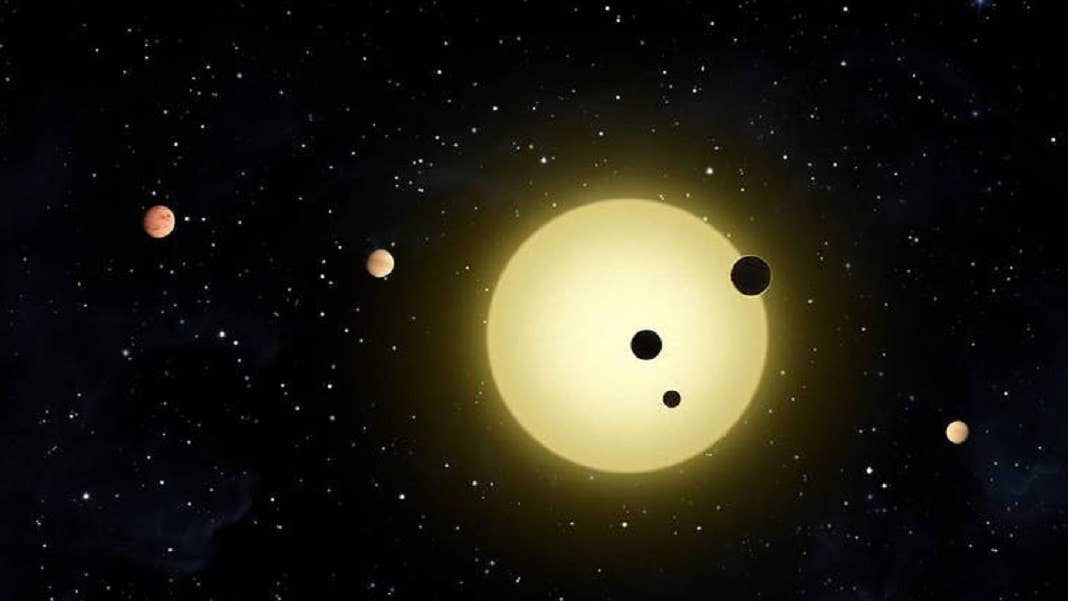A Quarter of Sun-Like Stars Eat Their Own Planets, According to New Research

Share
How rare is our solar system? In the 30 years or so since planets were first discovered orbiting stars other than our sun, we have found that planetary systems are common in the galaxy. However, many of them are quite different from the solar system we know.
The planets in our solar system revolve around the sun in stable and almost circular paths, which suggests the orbits have not changed much since the planets first formed. But many planetary systems orbiting around other stars have suffered from a very chaotic past.
The relatively calm history of our solar system has favored the flourishing of life here on Earth. In the search for alien worlds that may contain life, we can narrow down the targets if we have a way to identify systems that have had similarly peaceful pasts.
Our international team of astronomers has tackled this issue in research published in Nature Astronomy. We found that between 20 and 35 percent of sun-like stars eat their own planets, with the most likely figure being 27 percent.
This suggests at least a quarter of planetary systems orbiting stars similar to the sun have had a very chaotic and dynamic past.
Chaotic Histories and Binary Stars
Astronomers have seen several exoplanetary systems in which large or medium-sized planets have moved around significantly. The gravity of these migrating planets may also have perturbed the paths of the other planets or even pushed them into unstable orbits.
In most of these very dynamic systems, it is also likely some of the planets have fallen into the host star. However, we didn’t know how common these chaotic systems are relative to quieter systems like ours, whose orderly architecture has favored the flourishing of life on Earth.
Even with the most precise astronomical instruments available, it would be very hard to work this out by directly studying exoplanetary systems. Instead, we analyzed the chemical composition of stars in binary systems.
Binary systems are made up of two stars in orbit around one another. The two stars generally formed at the same time from the same gas, so we expect they should contain the same mix of elements.
However, if a planet falls into one of the two stars, it is dissolved in the star’s outer layer. This can modify the chemical composition of the star, which means we see more of the elements that form rocky planets, such as iron, than we otherwise would.
Traces of Rocky Planets
We inspected the chemical makeup of 107 binary systems composed of sun-like stars by analyzing the spectrum of light they produce. From this, we established how many of stars contained more planetary material than their companion star.
We also found three things that add up to unambiguous evidence that the chemical differences observed among binary pairs were caused by eating planets.
Be Part of the Future
Sign up to receive top stories about groundbreaking technologies and visionary thinkers from SingularityHub.


First, we found that stars with a thinner outer layer have a higher probability of being richer in iron than their companion. This is consistent with planet-eating, as when planetary material is diluted in a thinner out layer it makes a bigger change to the layer’s chemical composition.
Second, stars richer in iron and other rocky-planet elements also contain more lithium than their companions. Lithium is quickly destroyed in stars, while it is conserved in planets. So an anomalously high level of lithium in a star must have arrived after the star formed, which fits with the idea that the lithium was carried by a planet until it was eaten by the star.
Third, the stars containing more iron than their companion also contain more than similar stars in the galaxy. However, the same stars have standard abundances of carbon, which is a volatile element and for that reason is not carried by rocks. Therefore these stars have been chemically enriched by rocks, from planets or planetary material.
The Hunt for Earth 2.0
These results represent a breakthrough for stellar astrophysics and exoplanet exploration. Not only have we found that eating planets can change the chemical composition of Sun-like stars, but also that a significant fraction of their planetary systems underwent a very dynamical past, unlike our solar system.
Finally, our study opens the possibility of using chemical analysis to identify stars that are more likely to host true analogues of our calm solar system.
There are millions of relatively nearby stars similar to the sun. Without a method to identify the most promising targets, the search for Earth 2.0 will be like the search for the proverbial needle in a haystack.![]()
This article is republished from The Conversation under a Creative Commons license. Read the original article.
Image Credit: NASA / Tim Pyle
I am an astrophysicist and a data scientist of the Astronomical Observatory of Padua with 7+ years of experience in top research institutes around the globe. I study our own galaxy: how it is structured, how it formed, and how it evolves with time. For my research I analyze huge volumes of data gathered by the largest-scale stellar surveys ever undertaken, such as Gaia, APOGEE, Gaia-ESO, and GALAH. My task is to exploit this enormous body of data to its maximum potential. I also study chemical signatures of planet engulfment events in sun-like stars. I in interested in knowing the rate of planetary systems that undergo a very dynamical past culminating with the fall of planets into the central star. This research sheds light on the possible evolutionary paths of planetary systems and on the probability of finding analogues of our quiet solar system.
Related Articles

Data Centers in Space: Will 2027 Really Be the Year AI Goes to Orbit?

Scientists Say We Need a Circular Space Economy to Avoid Trashing Orbit

New Images Reveal the Milky Way’s Stunning Galactic Plane in More Detail Than Ever Before
What we’re reading
